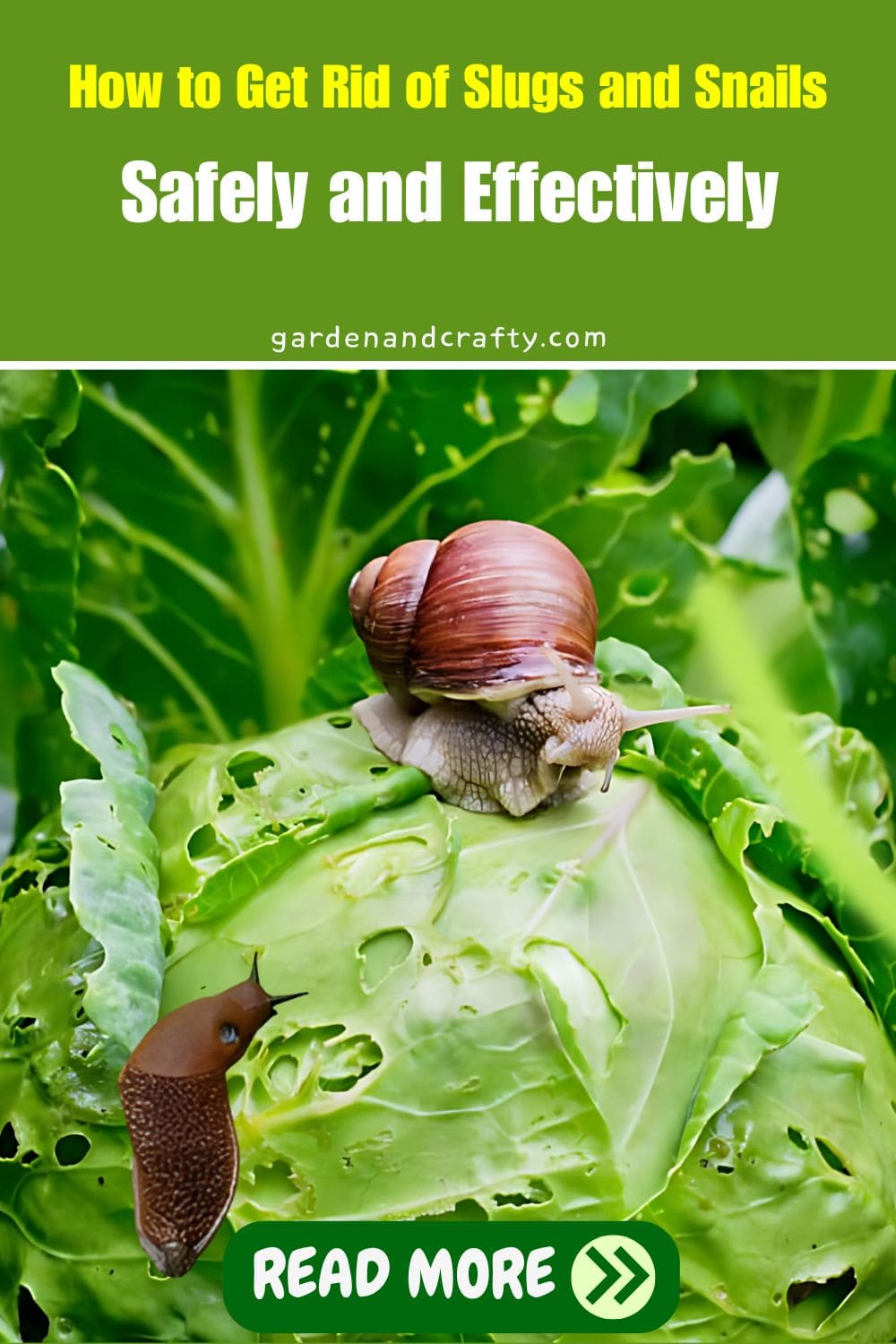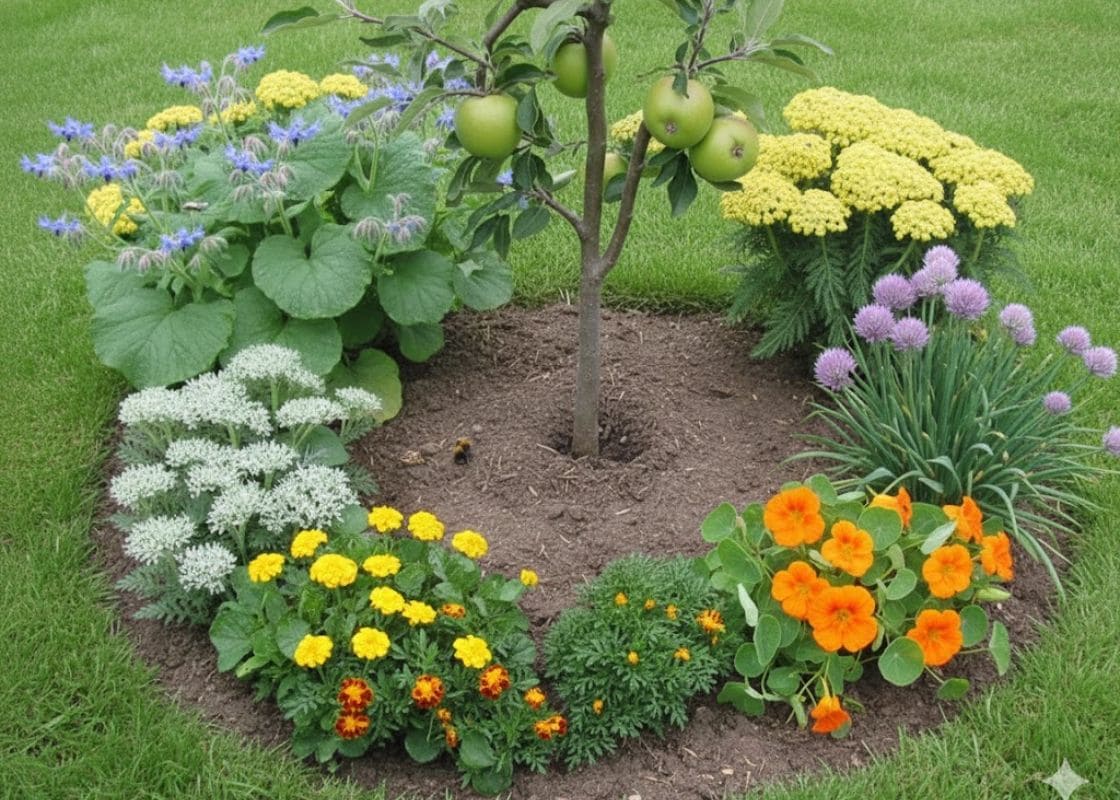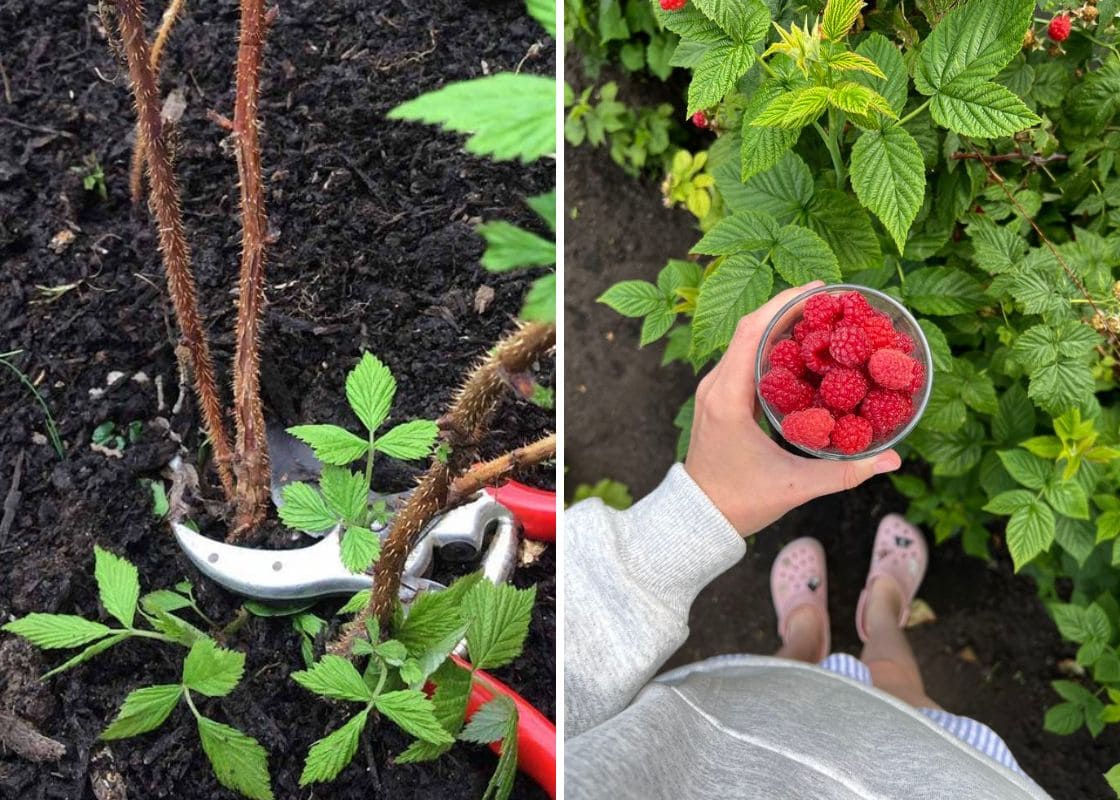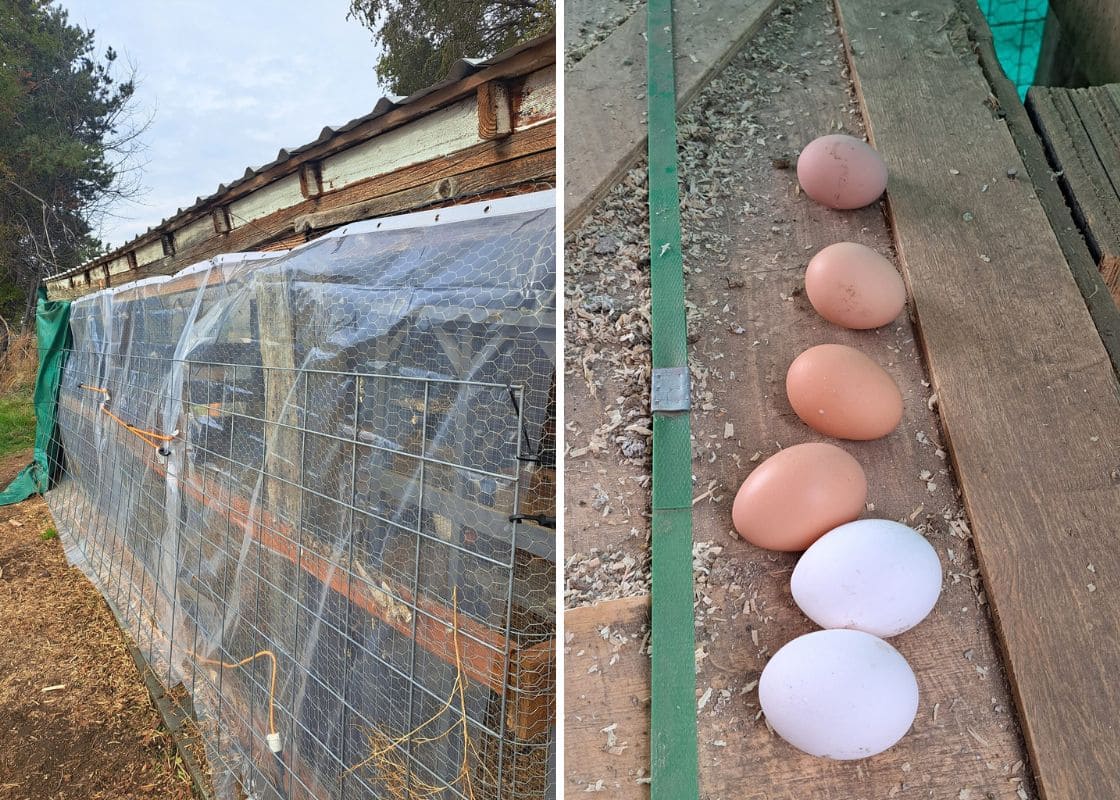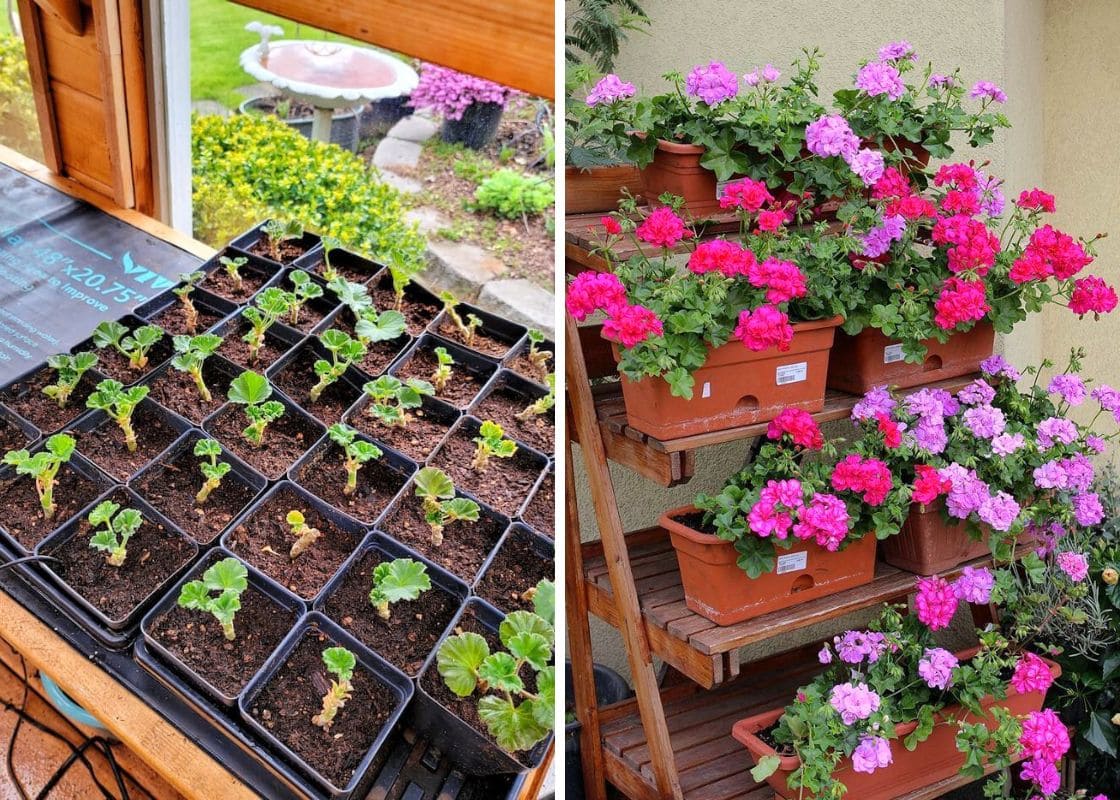Do you know there are about 200 different species of slugs and snails that could be lurking in your garden right now?
These pesky mollusks are notorious for their voracious appetites, particularly when it comes to tender, young plants.
The damage these creatures can cause is immense, they leave plants with ragged holes and slimy trails.
While many turn to chemical solutions like metaldehyde, these can be harmful to pets, wildlife, and the environment.
That’s why it’s crucial to explore safe and effective methods to keep these pests at bay.
Identifying Slugs and Snails
What are Slugs and Snails?
Slugs and snails, though often lumped together, have their differences.
Snails carry a coiled shell on their backs, which can range in color from brown to creamy white. Slugs, on the other hand, are shell-less, giving them more flexibility to hide in tight spaces.
They can vary in size from less than an inch to several inches long and come in colors like gray, black, and brown.
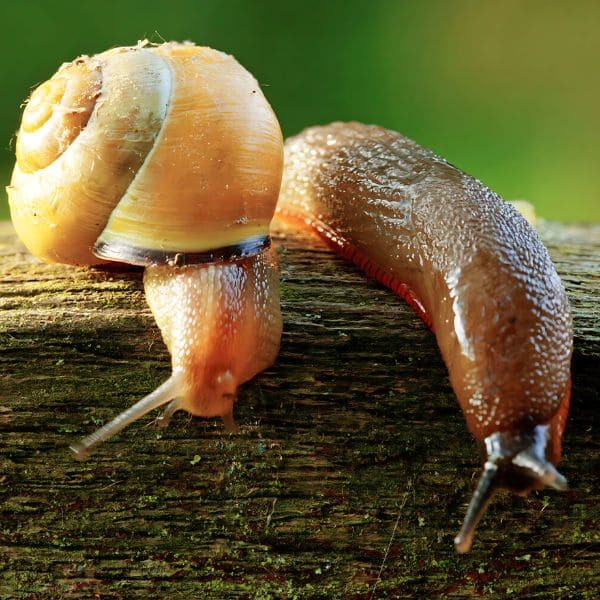
Their lifecycle starts as eggs, these eggs hatch into juveniles, which look like smaller versions of the adults, and mature within a few months.
Slugs and snails are mostly nocturnal, coming out at night or during rainy days to feast. They prefer cool, damp environments and can often be found hiding under leaves, rocks, or in the soil during the day.
Signs of Slugs and Snails
One evening, I went to check on my garden and noticed something was off. The leaves of my once-thriving lettuce plants were riddled with irregular holes.
A closer inspection revealed the telltale signs of a slug and snail infestation. If you’ve ever found similar damage in your garden, you might be dealing with these pesky intruders too.
Slugs and snails leave behind slimy trails that glisten in the sunlight. These trails are often the first clue that they’ve been feasting on your plants.
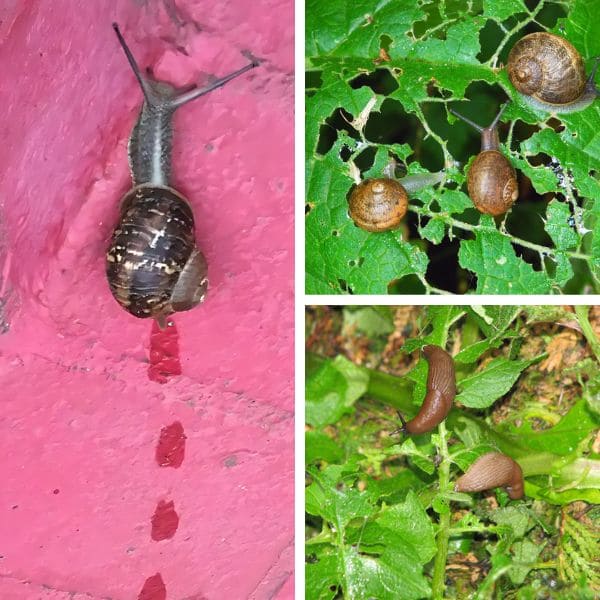
They are voracious, so you’ll also notice chewed leaves and, sometimes, entire seedlings that have been devoured down to the stem.
They tend to hide during the day, so you might find them under leaves, rocks, or within the soil if you look closely.
How to Control and Prevent Slugs and Snails
#1. Use Coffee Grounds
Slugs and snails can’t stand the texture of coffee grounds. The coarse particles irritate their soft bodies, deterring them from crossing. Moreover, the caffeine in the grounds can be toxic to them.

After brewing your coffee, save the grounds and let them dry out. Then, spread a thin layer around the perimeter of your garden beds or directly around individual plants.
You can even mix the grounds into the top layer of soil for added protection. I noticed a significant decrease in slug activity around my lettuce once I started using this method.
#2. Use Eggshells
Don’t throw away eggshells! After enjoying your eggs, rinse the shells and let them dry. Once dry, crush them into small pieces and scatter them around the base of your plants.
The sharp edges of the eggshells create an abrasive surface that slugs and snails are reluctant to cross.
These pests have soft, sensitive bodies, and the jagged edges of the shells can cause discomfort and even injury, making them turn away in search of an easier meal.
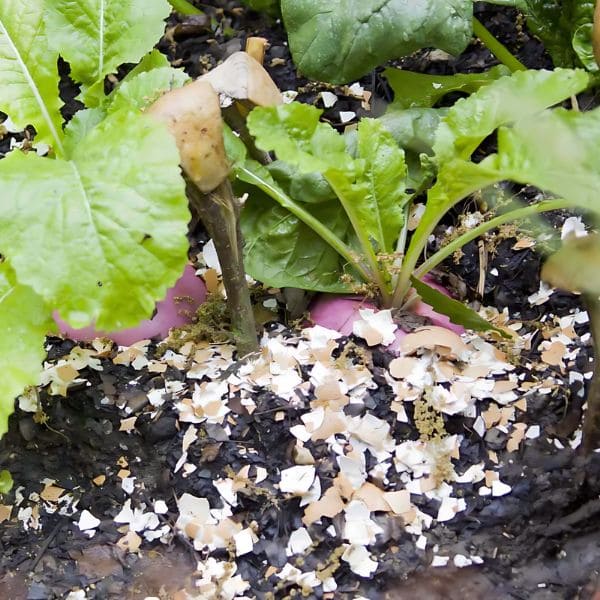
However, you need to keep the barrier thick enough and replenish it regularly, especially after rain, as the shells can break down over time.
Another consideration is that while eggshells deter slugs, they also add calcium to the soil, which is a bonus for your plants.
#3. Apply Beer Traps
Similar to eggshells, you can use old yogurt cups that work perfectly – and bury them in the soil around the plants, leaving the rim slightly above ground level.
Then, fill the cups halfway with beer. The yeast in the beer attracts slugs and snails, luring them in for a drink. Once they fall in, they can’t escape and drown.
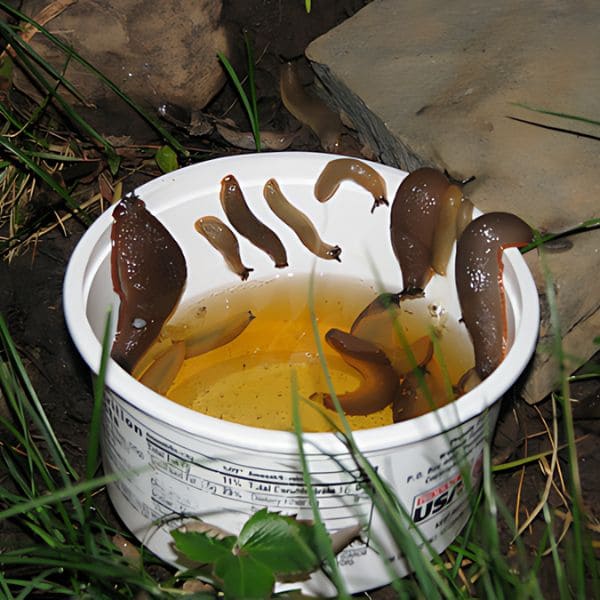
Every couple of days, you should check the trap, especially after rainy nights when the slugs are most active.
I emptied and refilled the cups as needed, this method is affordable, eco-friendly that can save my plants from further damage.
#4. Use Nematodes
Nematodes are tiny, but they pack a punch when it comes to slug control. These beneficial organisms hunt down slugs in the soil and release bacteria that infect and kill them.
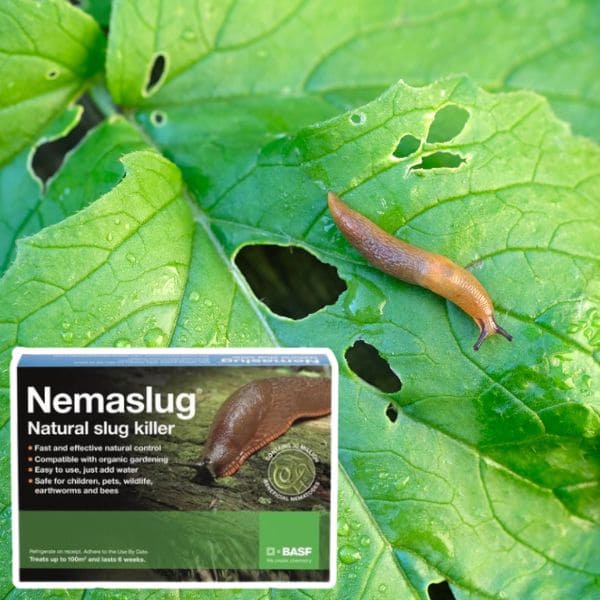
It sounds like something out of a sci-fi movie, but it’s an entirely natural and effective method. I ordered a packet of nematodes online and followed the simple application instructions.
Firstly, I mixed the nematodes with water and used a watering can to distribute the mixture evenly across my garden beds, focusing on areas with the most slug activity.
It’s best to do this in the early morning or late evening. Within a couple of weeks, I noticed a significant decrease in the slug population.
#5. Encourage Natural Predators
I love natural pest control by attracting frogs, toads, and birds to my garden. To create a habitat that attracts these natural predators, I started by adding a small pond.
Frogs and toads quickly took up residence, then they thrive in moist environments and feast on slugs at night.
Birds are easier to attract. I installed bird feeders and bird baths to encourage their frequent visits.
In return, they help keep the slug population down, especially during the early morning hours when they are most active.
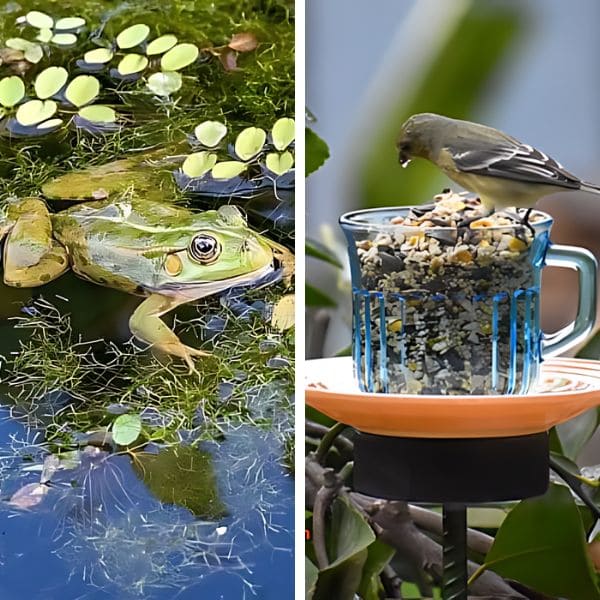
#6. Apply Copper Tape
Last year, my neighbor suggested that I try copper tape as a barrier. I’d heard that it creates a mild electric shock that these pests can’t tolerate, so I was eager to see if it would work.
First, I cleaned the rims of my raised garden beds and pots to ensure the tape would stick well. Then, I carefully wrapped the tape around the edges.
It’s important to overlap the ends slightly to create a continuous barrier. For pots, I placed the tape a few inches from the top to prevent any ambitious slugs from climbing over.
The results were impressive. Slugs and snails seemed to avoid the plants protected by copper tape. I consider it as a long-lasting solution.
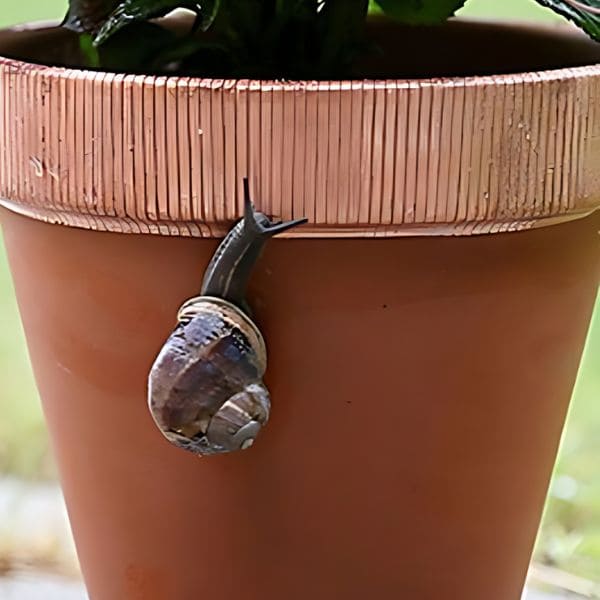
#7. Use Diatomaceous Earth
Diatomaceous earth is a fine, powdery substance made from fossilized remains of tiny aquatic organisms called diatoms.
Its abrasive texture is lethal to slugs and snails, causing them to dehydrate and die upon contact.
To apply it, you only need to shrink a thin layer around the base of my vulnerable plants, creating a barrier that slugs and snails wouldn’t cross.
I found that it works best when the soil is dry, as moisture can reduce its effectiveness. After a rain, I’d reapply the powder to maintain the barrier.
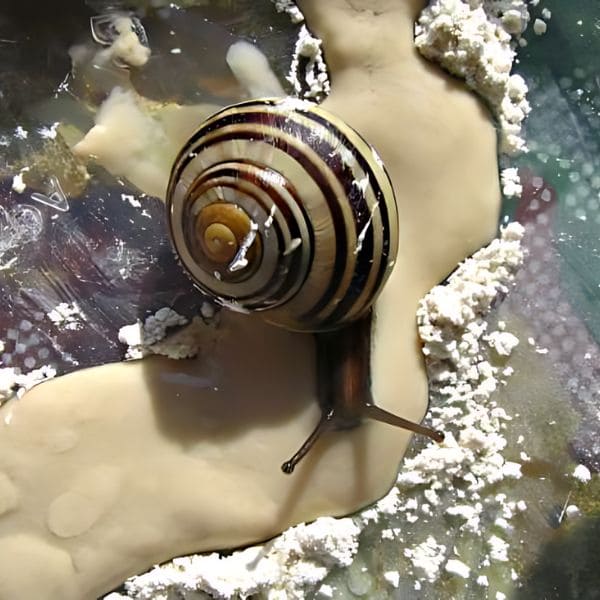
#8. Use Grit and Gravel
If grit and gravel are available, you should spread a layer of coarse grit around the base of your most vulnerable plants, such as lettuce and strawberries.
The sharp edges of the grit and gravel are uncomfortable for slugs and snails to crawl over, deterring these slimy invaders from reaching your plants.
I also see that this method is not only effective but also visually appealing, adding a decorative touch to the garden.
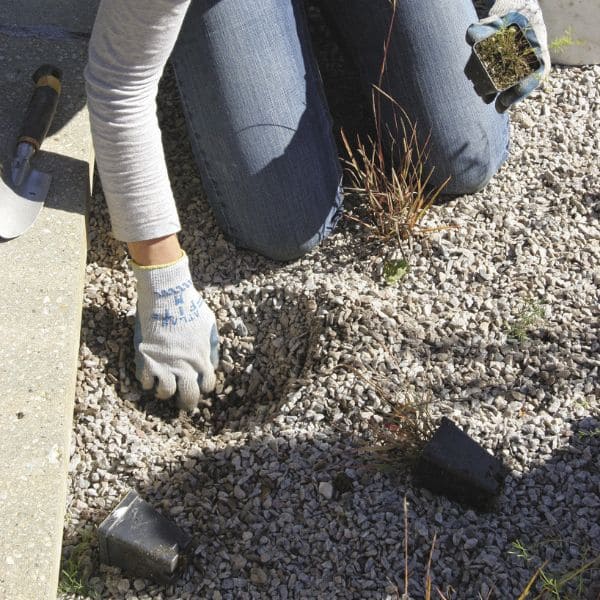
#9. Use Iron Phosphate
Unlike other chemical controls, iron phosphate is non-toxic to pets and wildlife, which was a major plus for me.
Iron phosphate works by disrupting the digestive system of slugs and snails. Once ingested, it causes them to stop feeding almost immediately, and they retreat underground to die.
To use iron phosphate, you need to scatter the granules evenly around the base of my plants, focusing on areas where slug activity is most noticeable.
It’s important to reapply after heavy rain. I was delighted to see that my plants were thriving again without the unsightly holes and slime trails.
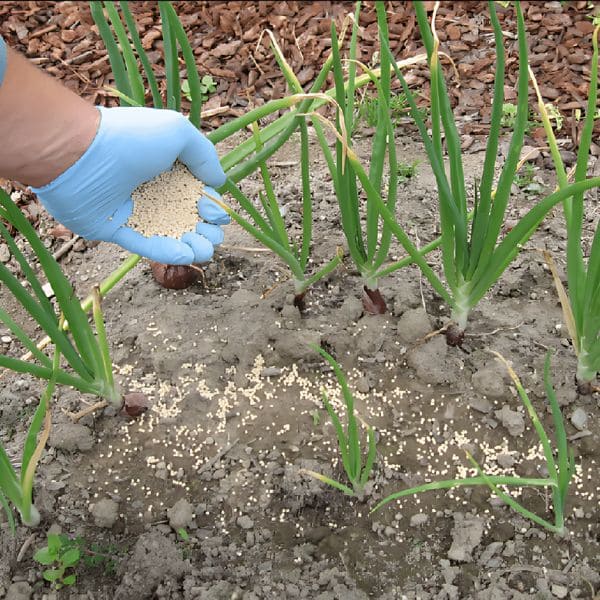
#10. Apply Mulching
To prevent slugs and snails from coming back, you can consider some types of mulch like pine needles, straw, and cocoa hulls.
Pine needles and straw create a dry, prickly surface that slugs dislike crossing. Cocoa hulls not only deter slugs but also add a pleasant aroma to your garden.
You should spread a generous layer around the base of your plants, ensuring the soil is well covered but not piled up against the stems.
Additionally, it’s important to regularly remove debris and dead leaves, as these can provide hiding spots for slugs and snails.
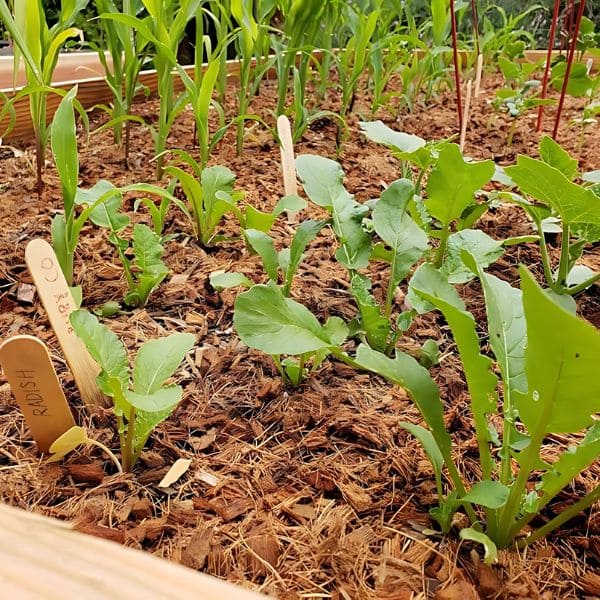
#11. Water Properly
Slugs and snails thrive in moist environments, so you should water in the early morning to let the soil and plants dry out during the day.
Besides, proper watering also helps prevent other issues like mold and mildew, keeping your garden healthier overall.
I often do this method together with one of the above ways, and the number of slugs and snails reduces significantly.

#12. Choose Companion Plants
I started expanding my garden by planting garlic, chives, and sage around my lettuce and cabbage. These aromatic herbs emit strong scents that slugs and snails find unpleasant.
Not only did this method reduce the slug population, but it also added flavor to my kitchen with fresh herbs.
Marigolds and nasturtiums were another great addition. These plants are known for their pest-repellent properties and brightened up my garden with their vibrant blooms.
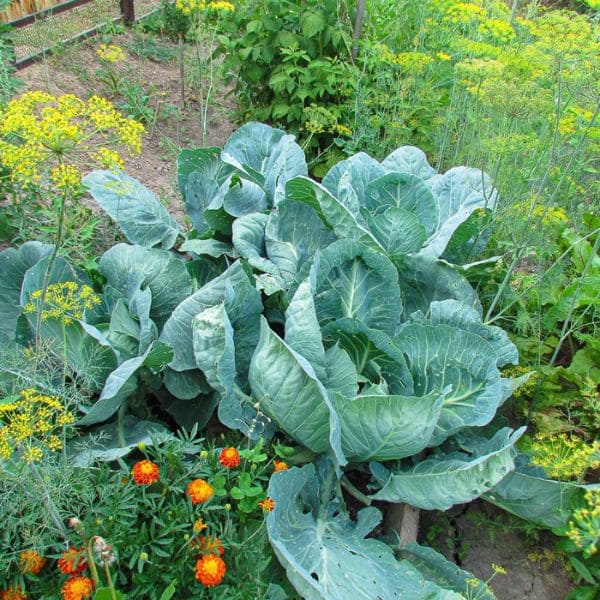
#13. Rotate Crops
Every year, I change the location of specific plants to prevent pests from establishing a stronghold.
I started by mapping out my garden and grouping plants with similar needs together. Each season, I rotated these groups to different areas of the garden.
For example, one year I planted lettuce and spinach in one bed, and the next year, I moved them to a different bed and replaced them with beans.
This practice confused the slugs and snails, as they returned to find their preferred food source gone.
Plus, crop rotation benefits soil health, improving nutrient distribution and reducing the risk of soil-borne diseases.
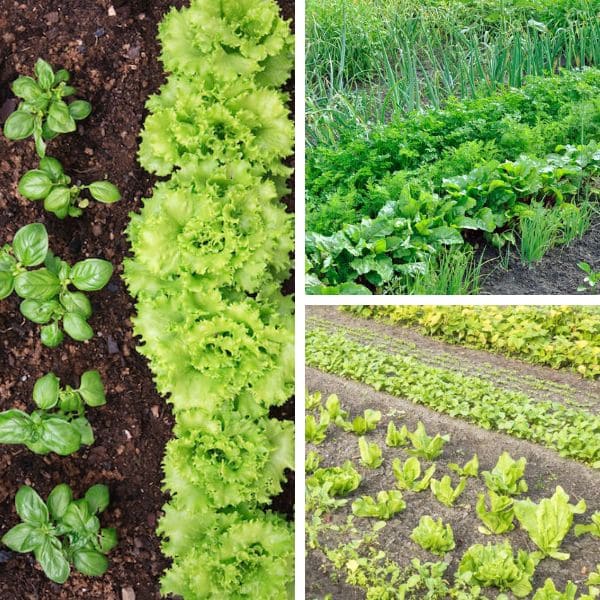
#14. Make DIY Spray
I heard about using vinegar spray as a natural deterrent, so I tried to mix equal parts of water and white vinegar in a spray bottle.
Early the next morning, I sprayed the solution directly on the slugs I found and around the base of my plants.
The vinegar acts as a mild acid that slugs find intolerable, and I noticed a reduction in their numbers within a few days.
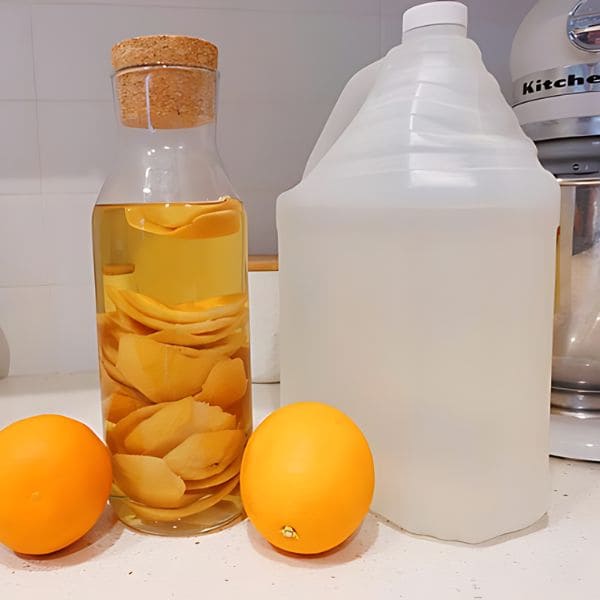
But I didn’t stop there. Another trick I learned was using citrus peels to trap and deter slugs.
After enjoying oranges and grapefruits, I saved the peels and added them to the vinegar sprayer then apply it to the leaves. Surprisingly, there are almost no slugs and snails in my garden.
